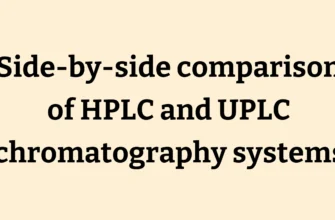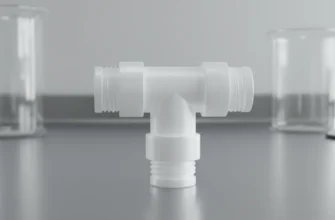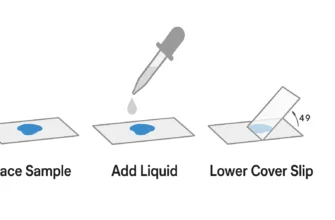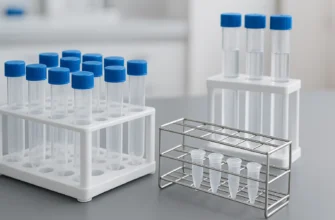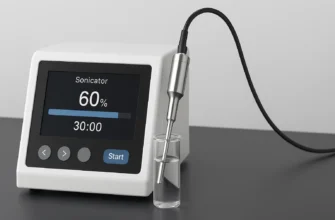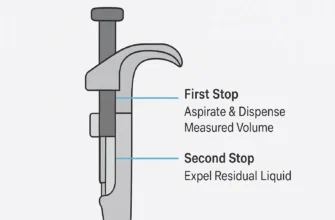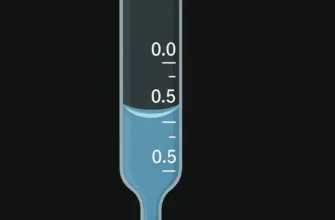Mastering the P20 Pipette: Your Laboratory’s Ultra-Precision Micro-Volume Workhorse
Market Context and the Critical Role of Precision Instrumentation
The global pipettes market has demonstrated robust growth, valued at $1.51 billion in 2024 and projected to reach $2.21 billion by 2034, reflecting a compound annual growth rate of 3.9%. This expansion is driven by increasing investments in biotechnology, pharmaceutical research, and diagnostic applications where precision and accuracy are paramount.
The adjustable volume segment dominated with 60% market share in 2023, highlighting laboratories’ preference for flexible, programmable instruments over fixed-volume alternatives. Single Channel Pipettes remain the foundation of precision liquid handling, with micropipettes enabling foundational techniques including PCR, ELISA, enzyme assays, and cell culture applications.
Understanding P20 Pipette Fundamentals: Precision in the Micro-Volume Range
Defining the P20 Micropipette System
The P20 pipette represents the gold standard for micro-volume liquid handling, specifically engineered for the 2-20 µL volume range (some models accommodate 0.5-20 µL or 1-20 µL depending on manufacturer specifications). This specialized instrument utilizes air displacement principles to achieve exceptional accuracy and precision in the most demanding micro-volume applications.
Single Channel Pipettes like the P20 form the cornerstone of molecular biology workflows, providing the precision required for PCR setup, qPCR reactions, enzyme assays, and sample loading onto electrophoresis gels. The device operates as an integrated system comprising the pipette mechanism, Compatible Tips, and operator technique working in perfect harmony.
Technical Specifications and Performance Parameters
Professional P20 pipettes achieve remarkable accuracy specifications:
-
2 µL volume: ±2.5-1.0% accuracy, ≤1.5-0.3% precision
-
10 µL volume: ±1.0% accuracy, ≤0.5% precision
-
20 µL volume: ±1.0% accuracy, ≤0.3% precision
These specifications comply with ISO 8655:2022 standards for piston-operated volumetric apparatus (POVA), ensuring experimental results meet the highest quality standards. Maximum accuracy is achieved within 20-100% of the maximum volume, making the P20 optimal for volumes between 4-20 µL.
Mastering the Volume Indicator: Decoding the Three-Digit Display System
Understanding the Digital Volume Display
The P20’s volume indicator utilizes a precise three-digit display system with number dials representing microliters with decimal point precision. The display format follows a standardized interpretation:
-
Top digit: Tens of microliters (10s)
-
Middle digit: Single microliters (1s)
-
Bottom digit (often in red): Tenths of microliters (0.1s)
Critical Reading Examples and Error Prevention
Volume setting examples demonstrate proper number dial interpretation:
-
20.0 µL: Display reads 2-0-0
-
9.5 µL: Display reads 0-9-5
-
2.0 µL: Display reads 0-2-0
The most critical error occurs when users familiar with larger pipettes misinterpret the P20 display. A reading of “090” on a P20 indicates 9.0 µL, not 90 µL as it would on a P200. This fundamental misreading can cause tenfold concentration errors, invalidating entire experimental results.
Security System Features and Ray ID Tracking
Modern P20 pipettes incorporate security system features including RFID technology for calibration tracking and Ray ID identification systems. These features enable comprehensive quality control, GLP/GMP compliance, and service history documentation essential for validated laboratory environments.
Pipette Tips and Compatibility: The Critical Interface
Understanding P20 Tip Specifications
Pipette Tips form the critical interface between the P20 and liquid samples, directly impacting accuracy, precision, and contamination prevention. The P20 typically utilizes yellow-coded tips designed for the 2-200 µL volume range, following universal color-coding conventions.
Compatible Tips for P20 systems include:
-
D200 tips: Standard 2-200 µL capacity
-
DF30ST tips: Sterile filtered tips for 2-30 µL applications
-
Low-retention tips: Specialized for viscous or surface-active liquids
ISO 8655:2022 Tip-Pipette System Requirements
Under ISO 8655:2022 standards, Pipette Tips and pipettes are calibrated as integrated systems. This means calibration results are only valid for the specific tip type used during calibration procedures. Laboratories must maintain separate calibrations for each tip manufacturer and tip model used with their P20 pipettes.
The updated standard requires tip changes at least once per volume tested during calibration to account for manufacturing variation in tip dimensions and sealing characteristics. This approach ensures experimental results reflect real-world pipetting conditions and tip-to-tip variability.
Applications in Advanced Laboratory Workflows
Genomics and Molecular Biology Applications
The P20 excels in genomics applications requiring precise micro-volume handling:
-
PCR setup: Adding 1 µL primers, 0.5 µL DNA polymerase, 2 µL template DNA
-
qPCR reactions: Dispensing 0.5 µL probes, 1 µL cDNA templates
-
Library preparation: Precise enzyme addition for DNA fragmentation and adapter ligation
-
Sample loading: Loading 2-10 µL samples onto agarose gels or polyacrylamide gels
Chromatin Accessibility and Epigenetics Research
P20 pipettes enable precision work in Chromatin Accessibility studies, including ATAC-seq and ChIP-seq protocols developed at institutions like the University of Maryland. These applications require precise addition of transposition enzymes, antibodies, and lysis buffers in micro-volumes to maintain cell integrity and experimental reproducibility.
Specialized Applications with Challenging Samples
Advanced applications include:
-
Nuclease-free water handling for RNA work
-
Sample tube transfers in 96-well and 384-well formats
-
Buffer preparation with precise volume of buffer entering each reaction
-
Waste buffer management in automated workflows
Advanced Pipetting Techniques and Best Practices
Standard Operating Procedures for Maximum Accuracy
Step-by-step protocols for optimal P20 performance:
-
Volume Setting: Adjust volume indicator using the adjustment wheel, approaching target volume from above to eliminate mechanical backlash
-
Tip Attachment: Mount Compatible Tips with firm, straight pressure to ensure airtight seal
-
Pre-wetting: For viscous liquids or organic solvents, aspirate and dispense 2-3 times to prime the tip interior
-
Aspiration: Depress plunger to first stop, immerse tip 2-3mm below liquid surface, release plunger slowly
-
Dispensing: Touch tip to vessel wall at 10-45° angle, depress to first stop, pause, then advance to second stop for complete delivery
Reverse Pipetting for Challenging Liquids
Reverse pipetting improves accuracy with viscous, volatile, or foam-prone liquids:
-
Depress plunger to second stop before aspiration
-
Aspirate liquid completely
-
Dispense by pressing only to first stop
-
Retain small volume in tip for disposal
This technique compensates for liquid properties affecting volume delivery, particularly important for glycerol, DMSO, and detergent solutions.
Integration with Automated Systems
Modern P20 pipettes integrate with laboratory automation through:
-
Light shield protection during UV exposure applications
-
Sensor array compatibility for automated liquid handlers
-
Flow Cell Tether systems for microfluidic applications
-
Cell Tether experiments requiring precise volume control
Calibration Standards and Quality Assurance
ISO 8655:2022 Compliance Requirements
P20 pipettes must comply with ISO 8655:2022 standards for calibration and testing procedures. The updated standard requires:
-
Annual calibration minimum frequency (more frequent for high-use instruments)
-
Gravimetric testing using 6-place analytical balances for volumes ≤20 µL
-
Tip-pipette system approach with specific tip types
-
Multiple tip changes per volume tested to account for manufacturing variation
Risk-Based Calibration Frequency
Calibration intervals depend on usage patterns, application criticality, and quality requirements:
-
High-use pipettes: Monthly to quarterly calibration
-
Critical applications: More frequent verification
-
Standard laboratory use: Semi-annual to annual calibration
-
Regulatory environments: GLP/GMP documentation and audit trail requirements
Performance Monitoring and Documentation
Quality control protocols include:
-
Daily performance checks with known standards
-
Calibration certificates with traceability to national standards
-
Service records documenting maintenance and repairs
-
User training documentation and competency assessment
Advanced Detection and Analysis Applications
Femto Pulse Integration
P20 pipettes enable precise sample preparation for Femto Pulse automated electrophoresis systems, requiring exact sample volumes for DNA and RNA quantification. These applications demand accuracy within 1% to ensure reliable fragment analysis and concentration determination.
Flow Cytometry and Cell Analysis
Micro-volume applications include:
-
Antibody staining: Adding 1-2 µL antibody solutions to cell suspensions
-
Viability dyes: Precise dye addition for live/dead discrimination
-
Buffer exchange: Small volume washes and resuspension
-
Cell sorting: Sample preparation for fluorescence-activated cell sorting
Inlet Port Cover and Waste Buffer Management
P20 pipettes facilitate sample injection through inlet port covers in analytical instruments and automated systems. Waste buffer handling requires precise volume control to prevent carryover and maintain system integrity.
Troubleshooting and Performance Optimization
Common Issues and Solutions
Performance problems and remediation:
-
Inaccurate volumes: Check tip fit, calibration status, and technique consistency
-
Poor precision: Verify temperature equilibration, tip quality, and aspiration speed
-
Carryover contamination: Ensure complete tip changes and proper ejection
-
Mechanical problems: Schedule professional service and internal cleaning
Environmental Factors
Environmental conditions affecting performance:
-
Temperature: Maintain ±2°C of calibration temperature
-
Humidity: Control to prevent condensation in tips
-
Air pressure: Account for altitude effects on air displacement
-
Vibration: Use stable work surfaces and vibration isolation
Future Technology Integration
Digital Connectivity and Smart Features
Next-generation P20 pipettes incorporate:
-
Bluetooth connectivity for data logging and protocol sharing
-
RFID tracking for inventory management and calibration monitoring
-
Mobile app integration for method development and training
-
Cloud-based quality management and compliance reporting
Sustainability and Green Laboratory Practices
Environmental considerations:
-
Reusable tip systems reducing plastic waste
-
Energy-efficient electronic models
-
Sustainable materials in pipette construction
-
Recycling programs for end-of-life instruments
Mastering Micro-Volume Precision
The P20 pipette represents the culmination of precision engineering designed for micro-volume applications where accuracy and reliability are non-negotiable. Mastery requires understanding the instrument as an integrated system comprising the pipette mechanism, Compatible Tips, and operator technique working in perfect harmony.
Critical success factors include proper volume indicator interpretation, understanding that “090” displays 9.0 µL rather than 90 µL, selecting appropriate Pipette Tips for specific applications, and maintaining rigorous calibration schedules under ISO 8655:2022 standards. The integration of advanced features including security systems, Ray ID tracking, and digital connectivity enhances both performance and compliance in modern laboratory environments.
As the pipettes market continues expanding toward $2.21 billion by 2034, the P20’s role in enabling breakthrough research in genomics, proteomics, Chromatin Accessibility studies, and precision medicine becomes increasingly critical. Investment in proper P20 pipette systems, Compatible Tips, and user training directly translates to improved experimental results, enhanced data quality, and accelerated scientific discovery.


